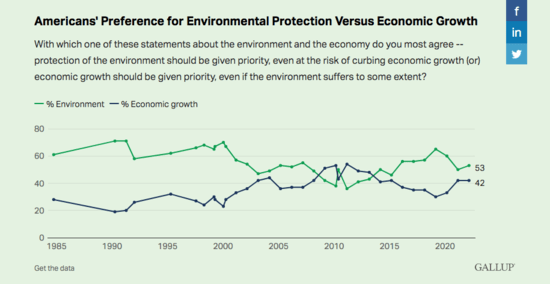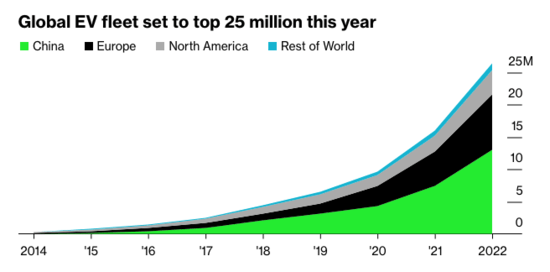Earth Matters: Group will monitor Biden's eco-justice promises; U.S. majority backs climate action
This post was originally published on this site
Three long-time environmental justice activists announced at the Historically Black Colleges and Universities’ Climate Change Conference in New Orleans Tuesday that they have secured funding to hold the Biden administration accountable for its commitment to the Justice40 initiative the president announced as part of an executive order his first day in office.
The initiative mandates that at least 40% of federal climate investments go directly to communities most affected by poverty and pollution. One of the three, Peggy Shepard, executive director of New York environmental justice group We Act for Environmental Justice, said at a virtual news conference, “I have not met many elected officials in my state or in many others who have ever heard of it.”
The other two activists are Beverly Wright of the Deep South Center for Environmental Justice and Robert Bullard of the Bullard Center for Environmental and Climate Justice. Bullard is widely known as the “father of environmental justice.”
All three, with Shepard as chairwoman, serve on the White House Environmental Justice Advisory Council. And while they are critical of the administration’s efforts, they aren’t hostile, noting that it’s too early to fully judge results. Bullard told reporters he gives the administration a “passing” grade so far. Wright said, “As a college professor, at this point, I grade them an incomplete.” That, in part, reflects the fact that the administration is still trying to determine which communities need investment most.
Drew Costley reports that Wright and Bullard said previous federal social and infrastructure projects have failed disadvantaged communities and they don’t want to see it happen again. “There’s been a lot of really novel approaches at changing the lives of Americans in general” but that just benefited white Americans, Wright said. As an example, Bullard pointed to discrimination in how flood relief was distributed in Texas after recent hurricanes there.
The trio’s initiative—called Engage, Enlighten and Empower—is being underwritten with $14 million from the Bezos Earth Fund.
Listen and subscribe to Daily Kos’ The Brief podcast with Markos Moulitsas and Kerry Eleveld
How to Get Involved This Earth Day
ECOQUOTE
“Climate activists are sometimes portrayed as dangerous radicals. But the truly dangerous radicals are the countries that are increasing production of fossil fuels. Investing in new fossil fuel infrastructure is moral and economic madness.” —António Guterres, UN Secretary-General
SHORT TAKES
Climate Change Proposals Favored by Solid Majorities in U.S.
The Gallup organization published its annual environment poll Monday. It gauges public sentiment for six policies meant to prevent or ameliorate the impacts of the climate crisis. By wide margins, Americans favor the policies, but there is a considerable difference across the political spectrum. Support, Gallup said, “ranges from 59% in favor of spending federal money for building more electric vehicle charging stations in the U.S. up to 89% for providing tax credits to Americans who install clean energy systems in their homes.”

When it comes to whether the environment or the economy should be given priority, the chart below shows that favoring the environment has lost ground, especially during the Great Recession a dozen years ago. The fact that the environment and the economy aren’t separate entities but inextricably intertwined fails to get through to many people.

The World’s Electric Vehicle Fleet Will Soon Surpass 20 Million
In 2016, there were only 1 million electric vehicles (EVs) on the planet’s roads. Come June, it’s projected that we’ll pass the 20 million mark and at the current rate of sales, 26 million by year’s end. China (with nearly half the total sales) and Europe are driving this adoption hardest, with North America a distant third. In the second half of the year, nearly a million new EVs a month will be added to these numbers, according to BNEF estimates—one every 3 seconds. This ramp-up far exceeds expectations of legacy vehicle and oil companies just a few years ago. As Kevin McKarracher reports, in BP’s 2016 outlook, the company estimated some 71 million plug-in vehicles would be on the road by 2035. BNEF puts the crossing of that milestone in 2025, a decade ahead of schedule. Still, there is a long, long way to go in converting the world to EVs. There are currently an estimated 1.2 billion light passenger vehicles powered by internal combustion engines globally, making that 20 million figure less than 2% of the total.

In ‘Scientist Rebellion,’ Researchers Face Arrest for Climate Action
A growing number of scientists around the world are stepping out of their labs and onto the streets to demand greater action to curb global warming, some even risking arrest as they chain themselves to banks and other institutions that they say aren’t taking the climate crisis seriously enough. As rising greenhouse gas emissions continue to drive up sea levels and exacerbate storms, wildfires and droughts, it’s putting increasing pressure on the scientific community to depart from its typical role as a neutral information provider and pick up the torch of activism.
Last week, an estimated 1,000 scientists in more than 25 countries staged demonstrations to demand that world leaders do far more to reduce climate-warming emissions, including a handful of researchers who were arrested for locking themselves to the gate of the White House and to the front door of the JPMorgan Chase bank in Los Angeles, as well as blocking traffic on the I-395 highway in Washington, D.C. […]
The events were part of a growing movement dubbed the “Scientist Rebellion,” a coalition of researchers around the world who seek to “expose the reality and severity of the climate and ecological emergency by engaging in non-violent civil disobedience.”
Critics will argue that by taking such action, these protesting scientists aren’t being objective. On the contrary, they are taking action because they’re objective and know where we’re headed if we don’t come up with the political will to seriously tackle the climate emergency.
green tweet
ECOPINION
We could all use some good news right now. By Peter Dykstra at Environmental Health News. Environmental headlines can be bleak, but good news is out there, too. “The environmental beat can be a real downer and we often focus on the problems—but there are signs of progress in our fight against climate change and pollution. From renewable projects to plastic treaties, here are some dashes of hope for our planet.”

Autocracies and Fossil Fuels Go Hand in Hand. By Bill McKibben at The Nation. The extraction of hydrocarbons tends to support despotism, whereas sun and wind are much closer to being democratic. [A]s I wandered the halls and the streets outside [at the COP26 Glasgow climate summit in November], it struck me again and again that a good deal had changed since the last big climate confab in Paris in 2015—and not just because carbon levels and the temperature had risen ever higher. The biggest shift was in the political climate. Over those few years the world seemed to have swerved sharply away from democracy and toward autocracy—and in the process dramatically limited our ability to fight the climate crisis. Oligarchs of many kinds had grabbed power and were using it to uphold the status quo; there was a Potemkin quality to the whole gathering, as if everyone was reciting a script that no longer reflected the actual politics of the planet. Now that we’ve watched Russia launch an oil-fired invasion of Ukraine, it’s a little easier to see this trend in high relief—but Putin is far from the only case.
Democrats Need to Fix Rural Economies—and Get the Credit for It. By Nick Hanauer at The American Prospect. “The American economy continued to expand throughout the neoliberal era, but nearly all of the benefits of this growth accrued to a relatively small number of big cities and their surrounding counties, a trend that only appears to be accelerating. At the median, rural workers now earn only 82 cents on every dollar earned by their urban counterparts, and as rural jobs grow more scarce and less diverse, rural workers have fewer opportunities to close the gap. Nationally, the U.S. workforce grew by 68% since 1975 while rural employment actually shrank by nearly a third. Between 2007 and 2018, just 11% of counties captured 9 out of every ten new jobs, a massive concentration of employment and wage growth in a handful of deep-blue metros. In second-tier cities, small towns, and rural counties, the health, and well-being of residents are being left behind.”

Op-ed: Fake Meat Won’t Solve the Climate Crisis. By Philip H. Howard at Civil Eats. “When you’re told there’s a simple solution to a very complex problem, you’re probably not getting the whole story. Today’s meat consumption is a good example. Meat and dairy are increasingly under the world’s microscope as livestock—which rely on huge quantities of feed crops and occupy nearly 80% of global farmland—accounts for between 14% and 30% of global greenhouse gas (GHG) emissions. It’s also the source of more frequent antimicrobial-resistant pathogens, and much of the global livestock and seafood industries have been exposed for unsafe and abusive working conditions. This complex web of problems requires more than one answer. And yet ‘alternative proteins’—from plant-based to lab-grown ‘fake’ meat and dairy—are being promoted as a simple solution.”
Nationalize the U.S. Fossil Fuel Industry to Save the Planet. By Robert Pollin at The American Prospect. Turning the biggest oil companies over to public ownership would serve several goals at once, including climate resilience.
The world’s most ambitious climate goal is essentially out of reach. By Shannon Osaka at Grist. Why won’t anyone admit it? “For the world to have even a sliver of a chance to meet its goals under the Paris Agreement, the scientists warned, emissions must peak no later than 2025 and then enter a precipitously steep decline. But hidden on page 25 of the “Summary for Policymakers” was an even grimmer note: That even in the IPCC’s most optimistic models, the chances of holding global warming to less than 1.5 degrees Celsius (2.7 degrees Fahrenheit) — compared to the pre-industrial average—is only around 38%. In short, even if countries were to defy their history of delay and act heroically quickly to boost clean energy, the odds are that it won’t be enough. For all intents and purposes, the 1.5-degree threshold has already passed. We just don’t know it yet.”
The Privatization of Water Is a Threat to Global Health. By Beauty Dhlamini at Jacobin. Water is a basic resource for all human beings. Yet market forces are increasingly privatizing water provision — not only making water unaffordable to poor and working-class people but posing a serious threat to public health in the midst of the pandemic.
WEEKLY ECOVIDEO
HALF A DOZEN OTHER THINGS TO READ (or LISTEN TO)
What Humans Can Learn From Nature’s Biggest Hibernators. By Chris Woolston at The Atlantic. Could bears hold the key to better treatments for stroke, osteoporosis, and Alzheimer’s? The roster of animals that hibernate includes all manner of rodents, some amphibians, and even a few primates (several species of dwarf lemurs), but bears are literally the biggest hibernators of them all. Adult grizzly and black bears outweigh even the largest American football players, and have the energy and curiosity of preschoolers, but they have no trouble hunkering down for months at a time. The choreography that goes into shutting down a creature this big defies easy explanation, says Elena Gracheva, a neurophysiologist at Yale University, in New Haven, Connecticut. “Hibernation is so complex, it requires adaptations at multiple levels,” she says. Bear hibernation offers important insights into the workings of large mammals, especially us, explains Gracheva, who co-authored an exploration of the physiology of hibernation in the 2020 Annual Review of Cell and Developmental Biology. A better understanding of the process could potentially change our approach to a wide range of human conditions, including stroke, osteoporosis, Parkinson’s disease, and Alzheimer’s.
Somalia drought: ‘Act now or 350,000 children will die’. By Mercy Juma at the BBC. “If nothing is done, it is projected that by the summer of this year, 350,000 of the 1.4 million severely malnourished children in the country, will perish,” warns Adam Abdelmoula from the United Nations Office for the Coordination of Humanitarian Affairs (Ocha). “Already in this country, 70% of school-age children are not attending school. In just one state in Juba land, the drought has led to closure of 40 schools and that is going to be the trend in many drought-affected areas,” he continues, adding that some girls are being married off early because their families cannot feed them.

Global biodiversity is in crisis, but how bad is it? It’s complicated. By Elizabeth Claire Alberts at Mongabay. Biodiversity has been defined as one of nine planetary boundaries that help regulate the planet’s operating system. But humanity is crossing those boundaries, threatening life on Earth. The big question: Where precisely is the threshold of environmental change that biodiversity can withstand before it is destabilized and collapses planetwide? The planetary boundary for biodiversity loss was initially measured by extinction rates, but this, as well as other measurements, have proved to be insufficient in determining a global threshold for biodiversity loss. At present, a worldwide threshold for biodiversity loss—or biosphere integrity, as it is known now—remains undetermined. However, thresholds for biodiversity loss can be clearly defined at local or regional levels when an ecosystem goes through a regime shift, abruptly changing from one stable state to another, resulting in drastic changes to biodiversity in the changed ecosystem.
The insect crisis: where did all the bugs go? (Podcast) Insects are a crucial part of our way of life. They are experts in pollination, pest control, and decomposing corpses, and yet humans don’t seem to spend a lot of time thinking about them. But with populations in decline due to habitat loss, pesticides, and the climate crisis, what would our world look like without them? Scientists are warning that we ignore these animals at our peril. In recent decades they have detected a stark drop in the number of insects. Michael Safi speaks to the environment reporter Oliver Milman, author of The Insect Crisis: The Fall of the Tiny Empires that Run the World, about the fascinating world of insects. Oliver tells Michael how these tiny creatures, often dismissed as an annoyance, play a vital role in making the Earth habitable.

Shrinking the Economy to Save the World By Kyle Paoletta at The Nation. The degrowth movement argues that the only way toward an ecologically sustainable world it to redirect economies away from market imperatives. Fifty years ago, fears ran rampant that the “population bomb” announced by biologists Paul and Anne Ehrlich would produce a world without enough space to feed its untold billions of inhabitants. Now it’s a population “bust” we must prevent, what political scientist Darrell Bricker and journalist John Ibbitson describe as “a relentless, generation-after-generation culling of the human herd” in their 2019 manifesto Empty Planet. […]For many economists, the coming demographic apocalypse is a problem only insofar as it will damage the gross domestic product. Though the GDP does not speak in any meaningful way to people’s actual quality of life, it remains an obsession of policy-makers around the world, who accept the premise that a growing GDP is a sign of a healthy economy and that a rising population is a key component of that equation.
Microplastics Found Deep in the Lungs of Humans for the First Time. By Damian Carrington at Mother Jones. What this means for our health is unknown—but it can’t be good. The scientists said microplastic pollution was now ubiquitous across the planet, making human exposure unavoidable and meaning “there is an increasing concern regarding the hazards” to health. […] Microplastics were detected in human blood for the first time in March, showing the particles can travel around the body and may lodge in organs. The impact on health is as yet unknown. But researchers are concerned as microplastics cause damage to human cells in the laboratory and air pollution particles are already known to enter the body and cause millions of early deaths a year.
ECOBITS
• ExxonMobil Announces $10 Billion Oil Investment the Same Day IPCC Signals End for Fossil Fuels • Methane emissions soar to highest level ever recorded • “Black carbon” threat to Arctic as sea routes open up with global heating • Chile announces unprecedented plan to ration water as drought enters 13th year • Colorado’s First Legally Composted Human Remains Laid to Rest • Could a Transportation Revolution Actually Save Us From Climate Change? • War Gives Oil Producers Greater Clout at Global Climate Talks • Great Plains Farmers Push Back Against CO2 Pipelines Encroaching on Their Land • ‘Forever chemicals’ upended a Maine farm — and point to larger problem • What Humans Can Learn From Nature’s Biggest Hibernators
